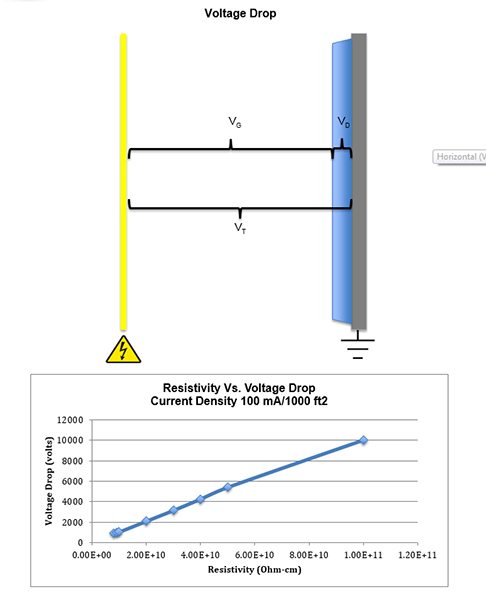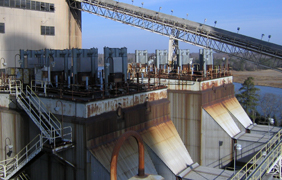Introduction to ESPs: Theory of Operations: Collecting
Collecting
Let’s stop here and reassess what’s taking place inside the precipitator. Gas molecules around the discharge electrode are positively ionized and generate an avalanche of free electrons. These free electrons race as fast as they can away from the strong negative field that surrounds the discharge electrode and get captured as they encounter gas molecules in the inter-electrode area. This creates negative gas ions that then accumulate on nearby PM and the net result is negatively charged particles that are repulsed by the negative electric field surrounding the DE and strongly attracted to the CE. This induces the negatively charge PM to migrate toward the grounded collection plate where it accumulates, and all of this happens in the blink of an eye.
Precipitation of Particulate Matter
The point when PM sticks to the CE and starts to form a layer is called precipitation. The chemistry definition of precipitation is œthe process of separating a substance from a solution as a solid. In the case of ESPs, PM matter is separated from the flue-gas solution by electrostatic attraction that causes it to precipitate onto the collection plate.
Neutralization & Clamping Forces
Once charged PM reaches the grounded CE, the charge on the particle is partially discharged and slowly leaked to the grounded collection plate. It is this retained charge that contributes to the inter-molecular adhesive and cohesive forces that holds the PM onto the CE. Adhesive forces cause the particles to physically hold on to each other because of their dissimilar surfaces. Newly arrived particles are held to the collected particles by cohesive forces; particles are attracted and held to each other molecularly. The accumulating dust layer is allowed to build up on the plate until a desired thickness is achieved and the particle removal cycle is initiated.
Helpful Resources
KnowledgeBase: Theory of Operations: Charging
KnowledgeBase: Theory of Operations: Removal
KnowledgeBase: Major Components Overview
KnowledgeBase: Collecting Plate Electrodes
KnowledgeBase: Process Influences & Keys to Performance



